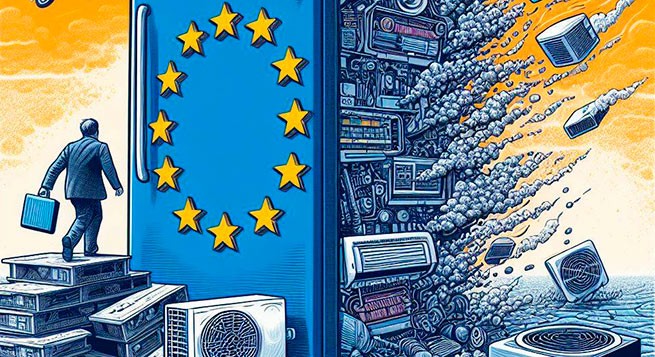With a decision that will lead to the need to replace 70% of electrical appliances that use chlorofluorocarbons (HFCs), namely household refrigerators and air conditioners, the European Commission has decided to save… the ozone layer. Which, of course, does not require special rescue efforts from the outside EUsince it has already been almost completely restored.
According to the signed text, the consumption of chlorofluorocarbons will be completely stopped, but by 2030, household refrigerators, refrigeration equipment, etc. will have to be completely taken out of service.
This decision makes no sense except for the companies producing refrigerators and air conditioners for home and automotive use, who will earn more than 30 billion euros from replacing all these appliances!
As for the “ozone hole”, the biggest “fairy tale” that has fed and enriched generations of “ecologists” over the past 30 years, the facts are very simple and clear: it is self-healing, without any human intervention!
The topic that fed tens of thousands of environmentalists began to end in 2019: if in 2018 the hole was the size of… the United States, covering a huge area of 7.7 million square miles, then in 2019 it decreased to 1.9 square miles, leaving scientists with their mouths agape trying to understand how this happened.
Observations of the ozone layer over Antarctica show that in 2019 the so-called “hole” did not grow at the same rate as in other years. The Copernicus Atmosphere Monitoring Service (CAMS) says it is currently less than half its normal volume and is far from the South Pole.
Should measures be taken to reduce chlorofluorocarbons? Yes, but gradually, over twenty years, and not at the expense of the economically disadvantaged sections of the population.
The fact that the ozone hole first appeared in Antarctica, where the problem is most pronounced today, has puzzled scientists for many years. Initially, it was questionable whether chlorofluorocarbons were the cause of this phenomenon, since Antarctica does not emit them.
However, scientists came to the conclusion that the reason for the intensification of the phenomenon in Antarctica was very low temperatures and other geomorphological factors. Why? No one has been able to answer this question.
Scientists say that although ozone thinning began earlier than usual this year, it was interrupted by an unknown event that raised stratospheric temperatures by 20 to 30 degrees. This destabilized the process of ozone destruction. At the moment, they don’t know what this sudden event is…
Nature regulates itself, but some people get fabulously rich from it…







More Stories
Weather forecast: rain and storms in Athens and Thessaloniki on Saturday
Easter with… umbrellas: unstable weather in the coming days – where will it rain
Thodoris Kolidas explains the phenomenon "black sky" on Good Friday